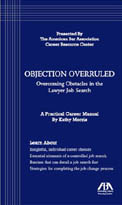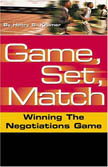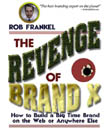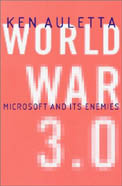Book Reviews
 Objection Overruled: Overcoming Obstacles in
the Lawyer Job Search
Objection Overruled: Overcoming Obstacles in
the Lawyer Job Search
By Kathy Morris (Chicago, IL: ABA Career Resource Center,
2000). 71 pgs. $24.95. Order, (800) 285-2221.
Reviewed by Shawn R. Hillmann
Many books give advice on how to get a job, where to look for jobs,
and how to figure out what kind of job you really want. The best career
advice books are written with the knowledge that all good advisors
should have: one size does not fit all. Kathy Morris clearly had this
truism in mind when she wrote Objection Overruled. Morris is an
experienced career counselor who previously headed Northwestern
University School of Law's Placement and Career Counseling Center,
founded a private career counseling company, and currently directs the
ABA Career Resource Center. Morris presents common mistakes, fears, and
barriers concerning the job search process (the objections) and then
overrules the objections with sound career advice and real-life
questions and answers.
Each of the 10 chapters is an objection. As an example, Objection #2
is, "I'm Working Too Hard to Find Time for a Job Search: The Reality
Obstacle." Morris gives tips on finding time, advises keeping the search
confidential, and identifies the pitfalls of too much time and
procrastination. The second half of each chapter contains questions and
answers. Morris has adapted these from her "Career Questions" column in
the Chicago Daily Law Bulletin, where she has answered
questions since 1992.
Morris believes that attorneys are hampered in their career search by
their training. Because law school and practice train legal minds to
predict the future with certainty and do their best to maintain
objectivity, legal job seekers apply these thought processes to the job
search, often resulting in frustration and failure. Morris sets up
simple, often common-sense, ways to beat the legal mindset.
Morris spends only limited time on technical areas of the job search
and focuses instead on the psychological and emotional aspects. She
spends some time on resumes and cover letters, addressing flaws in a job
seeker's approach. Practitioners in search of nuts-and-bolts information
should consult this book first, overcome flaws in approach, and then
find other resources to hone their presentations.
Because Morris pays attention to the theory of the job search, her
book might be more accommodating than others. One of the ABA's resources
is Morris herself, and given what she can do with a relatively short
career book, job seekers might consider consulting her in person.
Shawn R. Hillmann, Marquette 2001, is a law clerk
for the First Judicial District of Wisconsin.
 Game, Set,
Match: Winning the Negotiations Game
Game, Set,
Match: Winning the Negotiations Game
By Henry S. Kramer (New York, NY: ALM Publishing,
2001). 387 pgs. $19.95. Order, (800) 537-2128.
Reviewed by Jesús G.Q Garza
This is the type of book for which you must
roll up your sleeves because you are going to get just a little bit
dirty examining the nuts and bolts of the game of negotiations. Written
primarily for the uninitiated, this book gives just enough in-depth
study to the different phases of negotiations. It also makes a good desk
reference for those experienced in negotiations. Prof. Kramer views
negotiations as a game and outlines very nicely the groundwork needed to
understand not just the fundamentals of negotiations, but also planning,
an often overlooked, yet important, aspect of negotiating.
The practical and useful "tips, tricks, and traps" throughout the
book distinguish it from a writing that is more theoretical or academic
in its approach to analyzing negotiation strategy. The specific
technique the author uses to convey his message is to take a particular
component of the negotiating game, explain it fully, and then add an
easy-to-understand application of that concept. The tips, tricks (which
actually turn out to be treats), and traps can be applied to almost any
negotiation setting. These tidbits are the book's most helpful
aspect.
Each chapter is full of examples that are written in a
"mini-hypothetical" format. These examples are short, usually five to
seven sentences, and quickly get to the point. Some of the examples may
be too simplistic for a seasoned negotiator. Simplistic or not, these
examples paint an accurate picture of the behind-the-scenes happenings
of playing the negotiating game and what occurs when mistakes are
made.
The stages of the traditional bargaining process are discussed in
chronological order. For the tenderfoot, reading the book cover-to-cover
probably would be the most useful. For the veteran, a more practical
approach may be to keep this book close at hand and refer to it during
actual bargaining. As another tool of the trade, this book is very
helpful and easy to understand.
Jesús G.Q. Garza, U.W. 1996, is general counsel
for the Wisconsin Technical College System Board, Madison.
 The Revenge of Brand
X
The Revenge of Brand
X
By Rob Frankel (Encino, CA: Rob Frankel,
2000). 272 pgs. $39.95. Order,
www.revengeofbrandx.com.
Reviewed by Gordon Shea
When the NASDAQ plummeted earlier in 2001, old-school investment
wisdom suddenly was new again. Maybe it really does make a difference,
this wisdom goes, whether the dot-coms turn a profit. Within days,
however, the NASDAQ recovered without any discernible shift in the
dot-com business paradigm.
Why? Rob Frankel's The Revenge of Brand X: How to Build a Big
Time Brand on the Web (or Anywhere Else) doesn't answer this
question. What it does do, however, is force readers to rethink both old
and new conventional wisdom about valuation in the Internet age - if not
of stocks, then at least of some trademarks.
This book does not read well cover-to-cover. Frankel writes in the
conversational style of the many "do-it-yourself" books that clog
bookstores these days; a better subtitle for this might have been "The
Complete Idiot's Guide to Internet Branding."
Frankel provides good advice about how businesses can create positive
associations in consumers' minds, and about how the Internet can help
this process. At Frankel's best, he can be a thought-provoking
iconoclast - convincingly arguing, for example, that Coca-Cola and
Microsoft, two of America's most recognizable businesses, are also two
of America's worst brands. Frankel drives home such points with pithy
chapter subheadings, lists, appendices, and useful checklists at the end
of each chapter.
Frankel's smarmy and self-reflexive voice, however, nearly buries his
points. The author doubtless had fun writing this book, but the result
is a read that is often painfully off-key. The same irreverence that
allows Frankel to doubt Microsoft's brand name, for example, becomes
borderline offensive when it uses the images of a crucifix and the
American flag to illustrate general points. Perhaps just as
unforgivably, this book contains some major editing gaffes of
punctuation and grammar.
The Revenge of Brand X works on the level at which it
probably was meant to be read: by busy businesspeople in a few hours.
Although targeted to businesspeople, attorneys or firms interested in
establishing a unique Web presence, for example, could get something
from this volume. Intellectual property and corporate lawyers also could
use this book to provide clients with fresh ideas on beefing up Web
strategy or on differentiating the client's goods and services from
those of competitors.
Perhaps there is no better testimonial for Rob Frankel's ideas than
this book itself. Though this book too often is sloppy and facile, both
of its covers feature glowing pro-Frankel blurbs and glossy author
photos. The book's dedication page thanks "FrankelBees" (presumably
rabid fans of the author), and the back cover prominently displays the
author's eponymous Web address, along with a phrase defining the concept
of "branding" that the author apparently trademarked personally. Rob
Frankel's branding strategy certainly seems to work - even if only for
Rob Frankel.
Gordon R. Shea, Marquette 1998, has written on
topics ranging from telecommunications policy to gun control laws. He
lives in Chicago.
Fair Disclosure and Insider
Trading Reforms: Reg. FD, Rule 10b5-1 and Rule 10b5-2
By James Hamilton & Ted Trautmann (Riverwoods, IL: CCH
Inc., 2000). 88 pgs. $29. Order, (800) 449-6435.
Reviewed by David Sparr
This is essentially a guide for inside corporate counsels' use in
advising those within their companies who are providing information
about their companies to outsiders. Regulation FD follows logically from
the rules previously adopted on insider trading and insider tips.
Regulation FD sets forth the rules prohibiting unfair selective
disclosure and encouraging broad public disclosure about the company and
its activities. Prior to the establishment of Regulation FD, information
frequently was given to selected analysts and other persons who could
use the information to make trades or otherwise benefit themselves
before the general public became aware of the information. Analysts who
had failed to provide favorable data about companies could be
selectively excluded from receiving that information, a process that
caused conflicts of interest and pressure to report favorably about
particular companies.
The book first discusses the purposes of the Securities and Exchange
Commission (SEC) and the need for the regulation. It also describes
exclusions from coverage for certain disclosures and the reason for
these exceptions. The actual regulation follows, and the largest part of
the book consists of discussion by the SEC staff of the need for the
rule and the intent behind it.
The book lacks discussion of some rather important issues, such as
decisions by some companies to simply not make any disclosures to avoid
running afoul of the regulation. This unintended result of the rule
limits the available information about companies, contrary to the SEC
goal of getting information to investors. The authors point out that
this rule forces analysts to actually talk to customers, and do some of
their own work rather than relying on company news. While Regulation FD
has resulted in open webcasts and conference calls to which investors
are invited, it has resulted in at least as many situations in which
companies have decided to release information only under very formal
circumstances. This book is a worthwhile read for lawyers who advise
their corporations, and is similar to CCH tax guides in format.
David K. Sparr, U.W. 1978, practices in plaintiff's
personal injury. He recently retired from a 10-year stint as a Wisconsin
Academy of Trial Lawyers board member.
 World War 3.0: Microsoft
and Its Enemies
World War 3.0: Microsoft
and Its Enemies
By Ken Auletta (New York, NY: Random House, 2000).
436 pgs. $27.95.
Reviewed by Pamela Gallant
The author considers several intriguing questions raised by the
antitrust suit brought by the Department of Justice against Microsoft:
Has the historical legal notion of a monopoly become obsolete in today's
fast-changing Information Age? Is a company guilty of antitrust
violations if there is no evidence that consumers have been harmed by
its behavior? Did Microsoft's decision to integrate its Internet browser
with its Windows operating system cross the line between accepted
business practices and illegal, anti-competitive behavior? Auletta, an
esteemed journalist, considers these and other issues that lie at the
crossroads of law, technology, and economics. Regardless of the
conclusions drawn by the reader - including whether Microsoft is a
villain or victim - the story of the trial is absorbing, largely because
it is populated with colorful characters.
The book dissects Microsoft's trial strategy, including its decision
not to call Bill Gates as a witness. As a result of this strategic
decision, the judge and the media were left with the impression of Gates
in his pre-trial video deposition, which was described as generally more
damaging than helpful and showed Gates as evasive. The government's
hired gun, celebrated trial attorney David Boies, took every opportunity
to play the video for the court. Auletta also concludes that Microsoft
backed itself into a corner, and irritated Judge Thomas Penfield
Jackson, by refusing to acknowledge that any of its business practices
were intended to capture Netscape's market share. Although this book
will engage the general reader, trial lawyers in particular will find
the detail paid to the motivations behind the strategies worthwhile.
Auletta has written the definitive account of the antitrust
proceedings against Microsoft.
Pamela Gallant (nee Szymczak), U.W. 1992, is a
telecommunications attorney, emphasizing regulatory matters in
developing countries, with the international consulting firm Booz Allen
& Hamilton, McLean, Va.
To Review a Book...
The following books are available for review. Please request the book
and writing guidelines from Karlé Lester at the State Bar of
Wisconsin, P.O. Box 7158, Madison, WI 53707-7158, (608) 250-6127, klester@wisbar.org.
Publications and videos available for review
- Assessment of Earning Capacity, by Michael
Shahnasarian (Tucson, AZ: Lawyers & Judges Publishing Co., 2001).
170 pgs.
- Changing Jobs: A Handbook for Lawyers in the New Millennium,
3rd ed., edited by Heidi McNeil Staudenmaier (Chicago, IL:
ABA Law Practice Management Section, 1999). 349 pgs.
- Corporate Director's Guidebook, 3rd ed., by
Committee on Corporate Laws (Chicago, IL: ABA, 2001). 88 pgs.
- The Criminal Lawyer's Guide to Immigration Law: Questions
and Answers, by Robert James McWhirter (Chicago, IL: ABA
Criminal Justice Section, 2001). 377 pgs.
- Divorce Forms: A Handbook for Clients, edited
by Williard H.DaSilva (Chicago, IL: ABA Family Law Section, 2001). 40
pgs.
- Internet Law for the Business Lawyer, by David
Reiter, Elizabeth Blumenfeld & Mark Boulding (Chicago, IL: ABA
Business Law Section, 2001). 555 pgs.
- Keeping Kids Out of the System: Creative Legal Practice as a
Community Child Protection Strategy, by Leigh Goodmark
(Chicago, IL: ABA Center on Children and the Law, 2001). 121
pgs.
- Krueger on United States Passport Law, 2nd ed. 2000., 3rd
supp. 2001, by Stephen Krueger (Hong Kong: Crossbow Corp.,
2001). 400 pgs.
- Uniform Probate Code: Official Text, Comments,
History, CCH Editorial Staff (Riverwoods, IL: CCH Inc.,
2001). 1,484 pgs.
- Unlocking the Clubhouse: Women in Computing, by
Jane Margolis & Allan Fisher (Cambridge, MA: The MIT Press, 2001).
172 pgs.
- Wisconsin Secured Transactions Under Revised Article 9 of
the Uniform Commercial Code: Forms and Practice Manual, with forms on
disk, by Anthony C. Marino (Brooklandville, MD: Data Trace
Publishing Co., 2001).
Wisconsin
Lawyer
